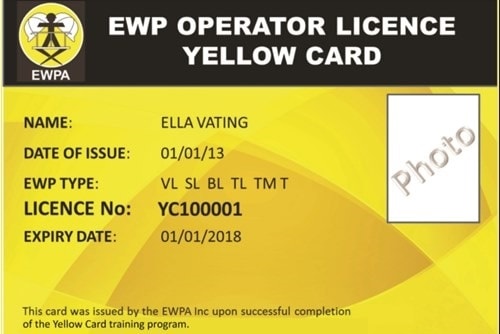Over the years there have been so many changes to the licencing requirements for plant and machinery, it can be hard to keep up. Vertical Lifts are a sub-category of Elevating Work Platforms (EWP) and come with their own licensing requirements.
The simple answer to, do I need a high-risk work licence for a vertical lift. Is NO you don’t need one.
Let’s take a deeper look at it.
Boom tyre elevating work platforms (where the length of the boom is 11 metres or more) means a telescoping device, the hinged device of an articulated device, or any combination of these, used to support a platform on which personnel, equipment and materials may be elevated.
A high-risk work licence is required for boom lifts that have the capacity to extend 11 metres or above.
What is a Vertical lift?
Vertical lifts operate extended straight up in a vertical manner, the vertical type, vertical mast or personnel lifts come in two configurations.
Both elevate using a telescopic mast in a vertical direction only.
Vertical lifts will usually have limited capability in terms of weight and extension and are most often used for internal maintenance tasks, such as changing light bulbs.
No licence is required for a Vertical lift
While there is no formal licence needed for these types of machinery, you still need to be deemed competent in its use.
There is no better way to achieve competency than undertaking training for a Registered Training Organisation RTO.
Depending on the courses that the RTOs can offer, some will offer a Yellow Card for a Vertical lift.
Generally, this type, of course, will be 8 hours and will provide the necessary knowledge and skills to operate Vertical Lifts in a safe and competent manner in accordance with workplace requirements in any environment.
What do I get when I finish the course?
Once finished, you will be issued a Yellow card. Which is issued by the Elevated work platform association of Australia for the VL class.
What does it cover
Generally, you will cover topics like
- How to plan and prepare for operations
- Conducting work activities from an elevating work platform
- Carry out operator maintenance
- And of course clean up.
Any training that you can do or offer employees. That helps you or your business have safe and effective use of plant and machinery. Is well worth the investment.




Leave a Reply